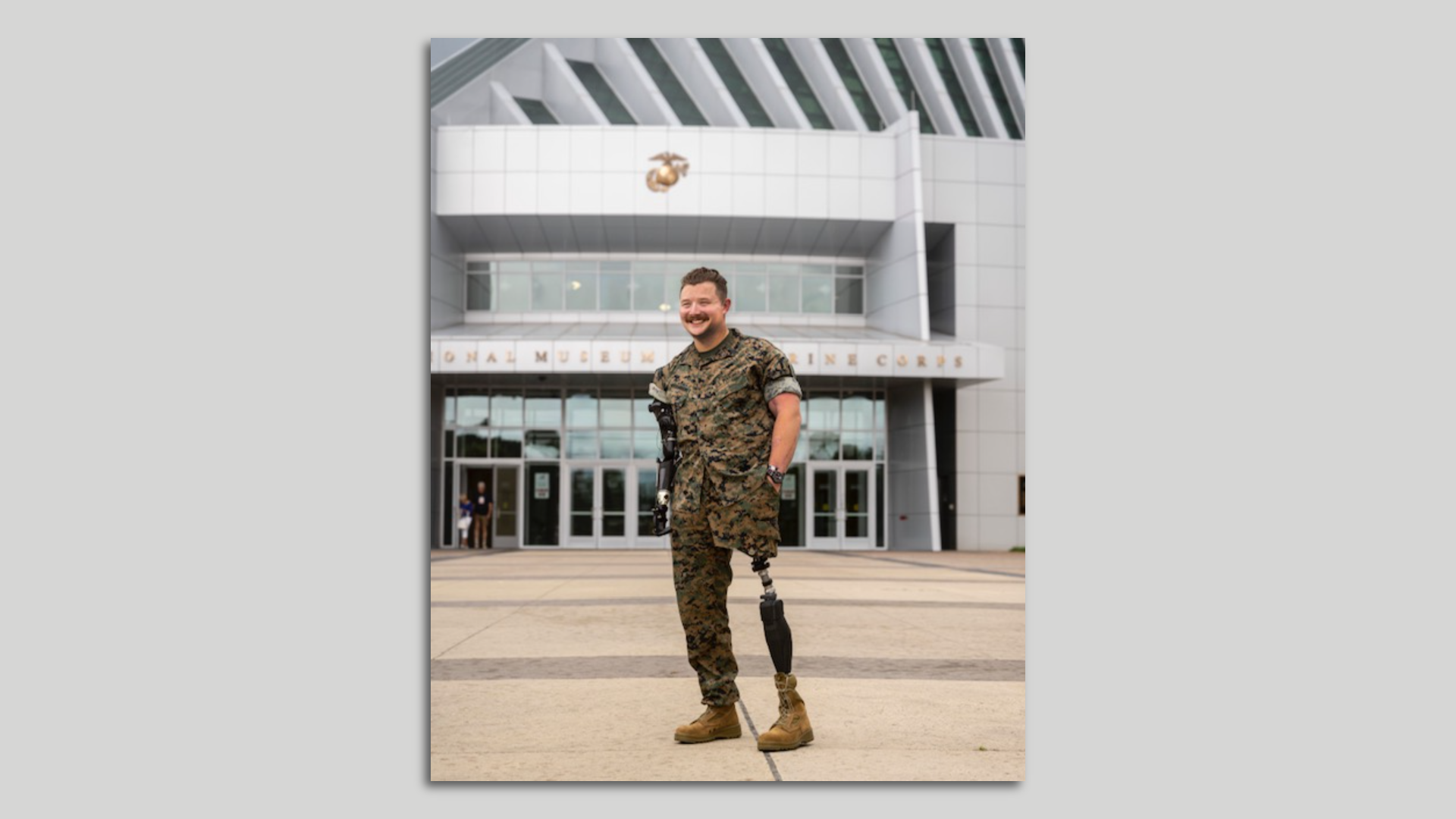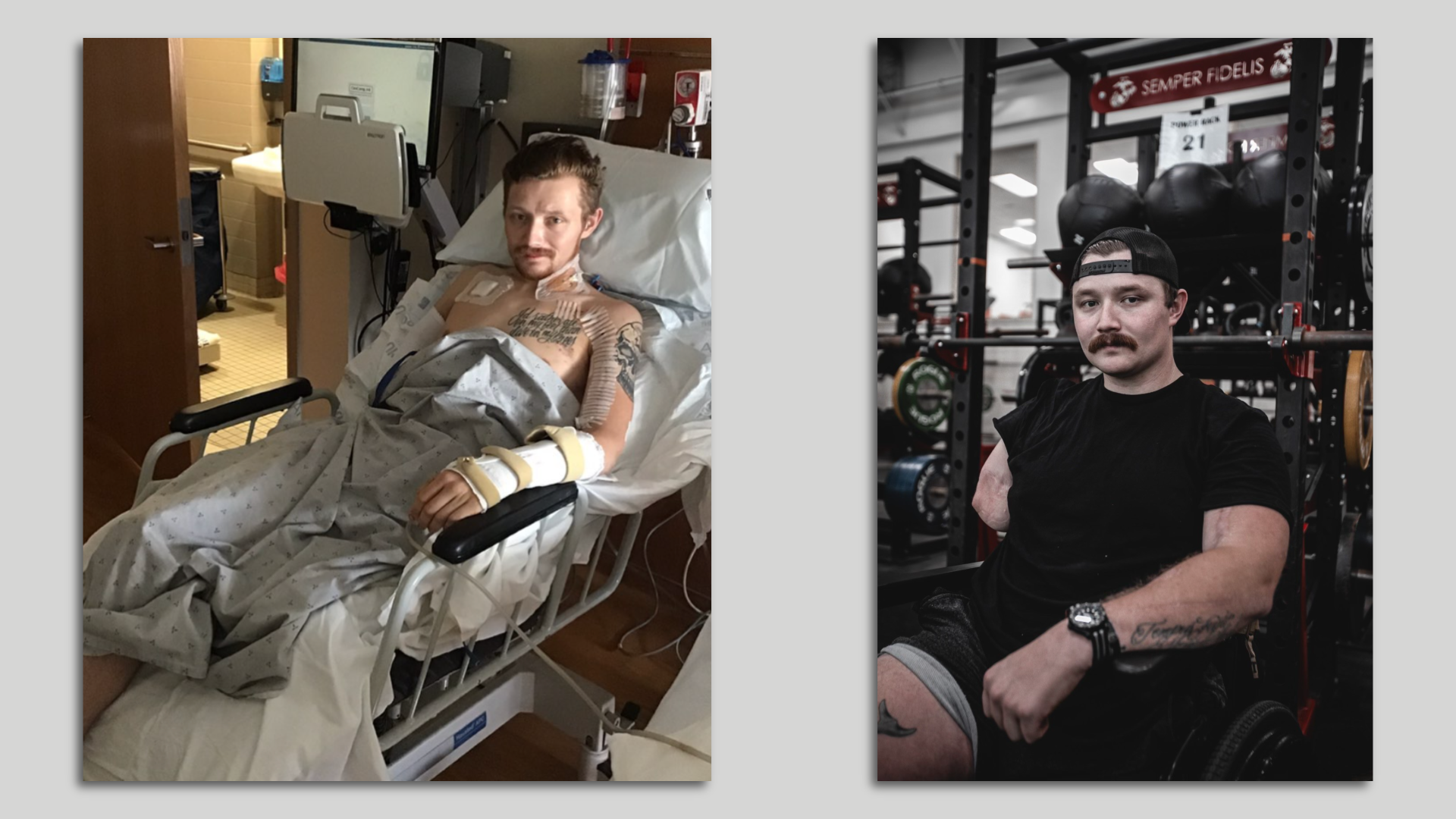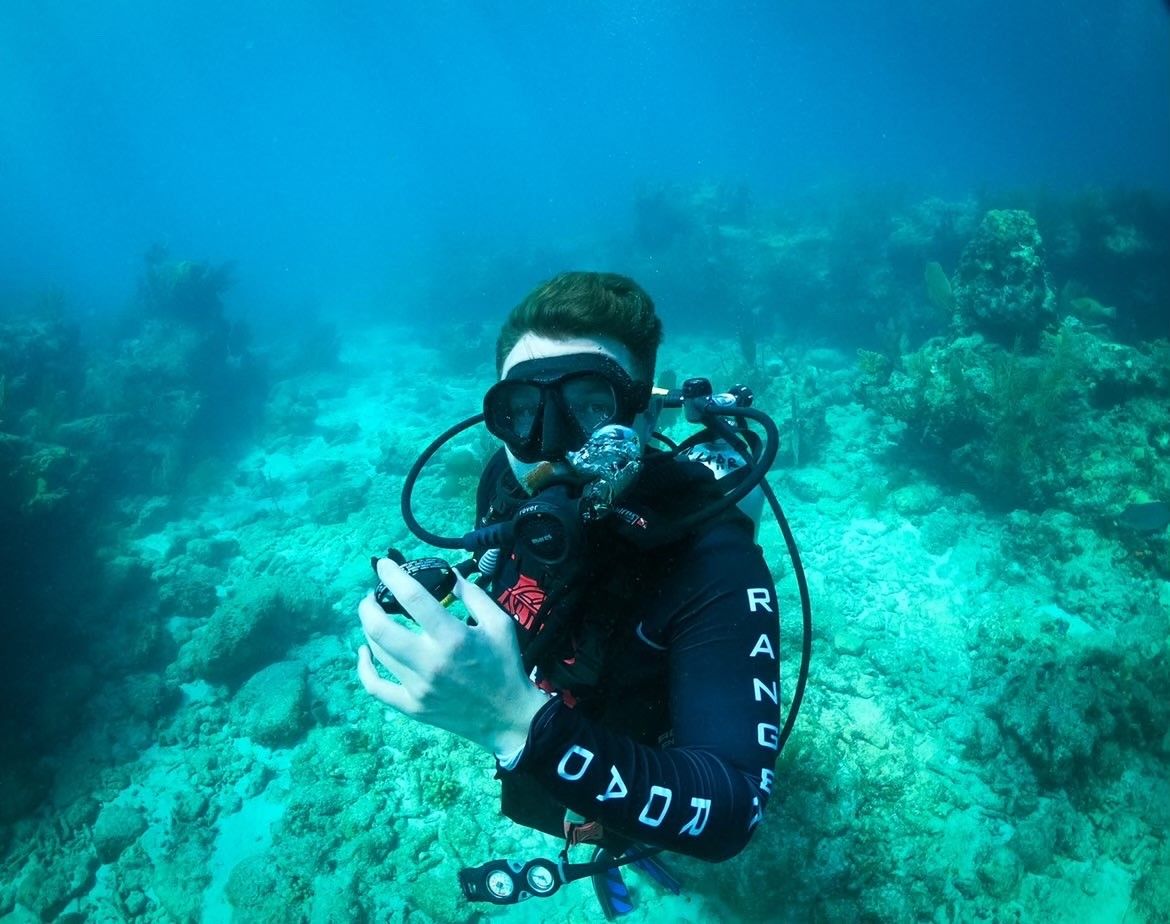Marine vet goes from near-death to conquering marathons
Marine Sergeant Tyler Vargas-Andrews always led his squad with a personal slogan: “You can never train too hard for a job that can 𝓀𝒾𝓁𝓁 you.”
Why it matters: That mantra saved Vargas-Andrews’ life when he was evacuating the Kabul airport during the Taliban takeover of Afghanistan in 2021 and a suicide bomb exploded, shredding his body with more than ball bearings.

- The blast 𝓀𝒾𝓁𝓁ed more than 170 Afghans and 13 U.S. service members, two of them Vargas-Andrews’ close friends.
What happened next: A week later, Vargas-Andrews woke up at Walter Reed National Military Medical Center in Bethesda, Md. His stomach was ripped open and organs damaged. His right arm above the elbow and entire left leg were amputated. He went down to just 115 lbs. in a few weeks.
- “I had a very strong foundation in physical fitness and was very healthy leading up to the point of injury,” Vargas-Andrews tells Axios. “That’s the only reason I’m here today.”
After 49 surgeries and four months inpatient at Walter Reed, Vargas-Andrews has a new mantra, one he’s using to inspire others and launch his own fitness business: “Never a victim.”
- “I lived my life very hard and very fast before getting wounded, 100 miles per hour,” says Vargas-Andrews, who has testified before Congress about his saga. “Now I’m probably going about 55, but I’m jumping on every chance.”
Axios spoke with the 25-year-old vet about his training program at home in southern Virginia, what keeps him going, and what’s next.

Before and after: In the hospital and at the gym. Photo courtesy of Semper Fi & America’s Fund
Go-to accessory: An Ice Trikes recumbent bike, customized so he can single-pedal with his right leg and steer with his left hand. “Whether I ride to the gym or just in my garage, it’s keeping me active and fit.”
Race day training: Vargas-Andrews warmed up for the Marine Corps Marathon — 26.2 miles hand-cycling — with a four-miler in New York last year, and then the Army Ten Mile last October.
- Just over two years from near death, he finished 38th overall in the MCM hand cycle division at two hours, 49 minutes, and 30 seconds.
For fun: Skydiving, which he just did for the first time post-injury (he’s looking to get a special license to solo skydive).
- He also just completed an open-water dive certification. “It wasn’t adapted, I did a completely normal scuba course and just figured out stuff as I went.”
Weekly routine: Before the injury, Vargas-Andrews was hitting the gym six times a week and deadlifting more than 500 lbs. Now he’s at the gym four to five times a week with a mix of lifting, swimming, rowing, and stretching.
- “Having just one of each limb they get worn out pretty fast. But I’ve gotten my own body science down now.”
Favorite splurge: Dinner with his girlfriend. “I won this ridiculously expensive recteq smoker, so I love throwing in a good tip roast.”

Scuba dive. Photo courtesy of Semper Fi & America’s Fund
Biggest inspiration: His mom, a single mother of three who put herself through law school. “I don’t have a reason to not be successful after she’s been through so much and she’s still successful and raising three children. That was huge in my foundation.”
Biggest help: Semper Fi & America’s Fund, a Virginia-based nonprofit that Vargas-Andrews’ says has changed his life (and gave him that snazzy bike). “Besides financial support, they show you and your family that you’re not alone. That’s huge.”
What’s next: After nearly six years in the Marines, Vargas-Andrews retired after the blast. He’s getting a personal trainer certification through Warrior Strong Inc. and then plans to join their adaptive training academy.
- The dream is to open an adaptive fitness center with special equipment and training for disabled individuals. “I want to show civilians and service members alike that post-injury, you can still live an active life.”
What keeps him going: That he survived. “I woke up in the hospital thinking ‘I will not allow what has happened to dictate my life.”
- “I might be living a little differently, a little slower. I’m a double amputee, but I know triple amputees, quadriplegics, people that have every reason to give up and they haven’t. The way I look at it, my buddies [who were 𝓀𝒾𝓁𝓁ed in the attack] aren’t here, and I’d be dishonoring their memory if I chose to quit.”